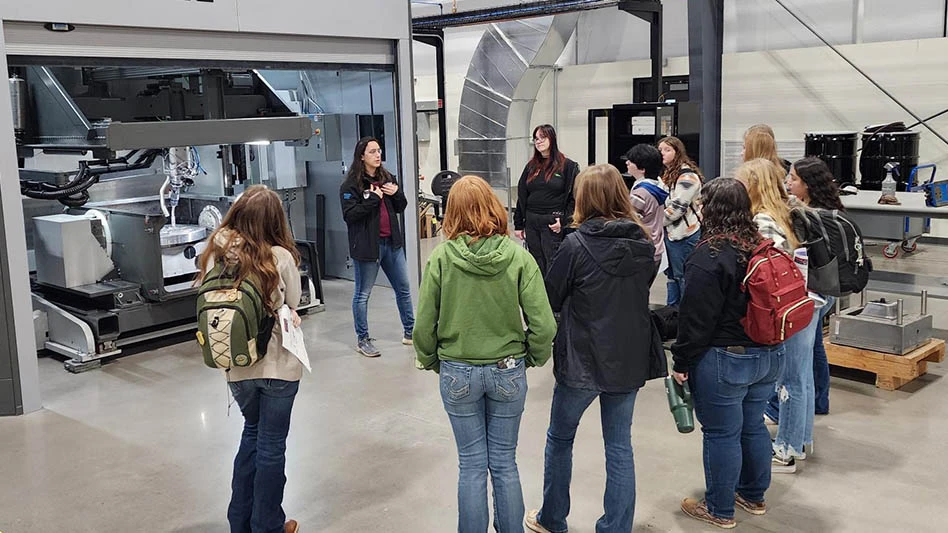
Rice University materials scientists are making nanodiamonds (diamonds smaller than 1µm) and other forms of carbon by smashing nanotubes against a target at high speeds. Nanodiamonds won’t make anyone rich, but the process of making them will enrich the knowledge of engineers who design structures that resist damage from high-speed impacts.
The diamonds are the result of a detailed study on the ballistic fracturing of carbon nanotubes at different velocities. The results showed that high-energy impacts caused atomic bonds in the nanotubes to break and sometimes recombine into different structures.
The work led by the labs of materials scientists Pulickel Ajayan at Rice and Douglas Galvao at the State University of Campinas, Brazil, is intended to help aerospace engineers design ultralight materials for spacecraft and satellites that can withstand impacts from high-velocity projectiles like micrometeorites.
Knowing how the atomic bonds of nanotubes can be recombined will give scientists clues to develop lightweight materials by rearranging those bonds, says co-lead author and Rice graduate student Sehmus Ozden.
“Satellites and spacecraft are at risk of various destructive projectiles, such as micrometeorites and orbital debris,” Ozden says. “To avoid this kind of destructive damage, we need lightweight, flexible materials with extraordinary mechanical properties. Carbon nanotubes can offer a real solution.”
The researchers packed multi-walled carbon nanotubes into spherical pellets and fired them at an aluminum target in a two-stage, light-gas gun at Rice, and then analyzed the results from impacts at three different speeds.
At what the researchers considered a low velocity of 3.9km/s, many nanotubes were found to remain intact. Some even survived higher velocity impacts of 5.2km/s. But very few were found among samples smashed at a hypervelocity of 6.9km/s. The researchers found that most of the nanotubes split into nanoribbons, confirming earlier experiments.
Co-author Chandra Sekhar Tiwary, a Rice postdoctoral researcher, notes the few nanotubes and nanoribbons that survived the impact were often welded together, as observed in transmission electron microscope images.
“In our previous report, we showed that carbon nanotubes form graphene nanoribbons at hypervelocity impact,” Tiwary says. “We were expecting to get welded carbon nanostructures, but we were surprised to observe nanodiamond as well.”
The orientation of nanotubes both to each other and in relation to the target and the number of tube walls were as important to the final structures as the velocity, Ajayan says.
“The current work opens a new way to make nanosize materials using high-velocity impact,” says co-lead author Leonardo Machado of the Brazil team.
The research appears in the American Chemical Society journal ACS Applied Materials and Interfaces.
The research was supported by the Department of Defense, the U.S. Air Force Office of Scientific Research and its Multidisciplinary University Research Initiative, NASA’s Johnson Space Center, the São Paulo Research Foundation, the Center for Computational Engineering and Sciences at Unicamp, Brazil, and the Brazilian Federal Agency for Support and Evaluation of Graduate Education.
Rice Department of Materials Science and NanoEngineering

Explore the November December 2016 Issue
Check out more from this issue and find your next story to read.
Latest from Aerospace Manufacturing and Design
- Season's greetings
- 2024 Favorites: #7 Article – Deep drawing aerospace components
- 2024 Favorites: #7 News – GKN Aerospace completes sale of St. Louis facility to Boeing
- 2024 Favorites: #8 Article – Beyond uptime
- 2024 Favorites: #8 News – NASA, Lockheed Martin reveal X-59
- 2024 Favorites: #9 Article – 5 tips for upskilling your aerospace machinists
- 2024 Favorites: #9 News – Siemens acquires Altair Engineering
- 2024 Favorites: #10 Article – How 3D-printed aviation parts can accelerate return to air





